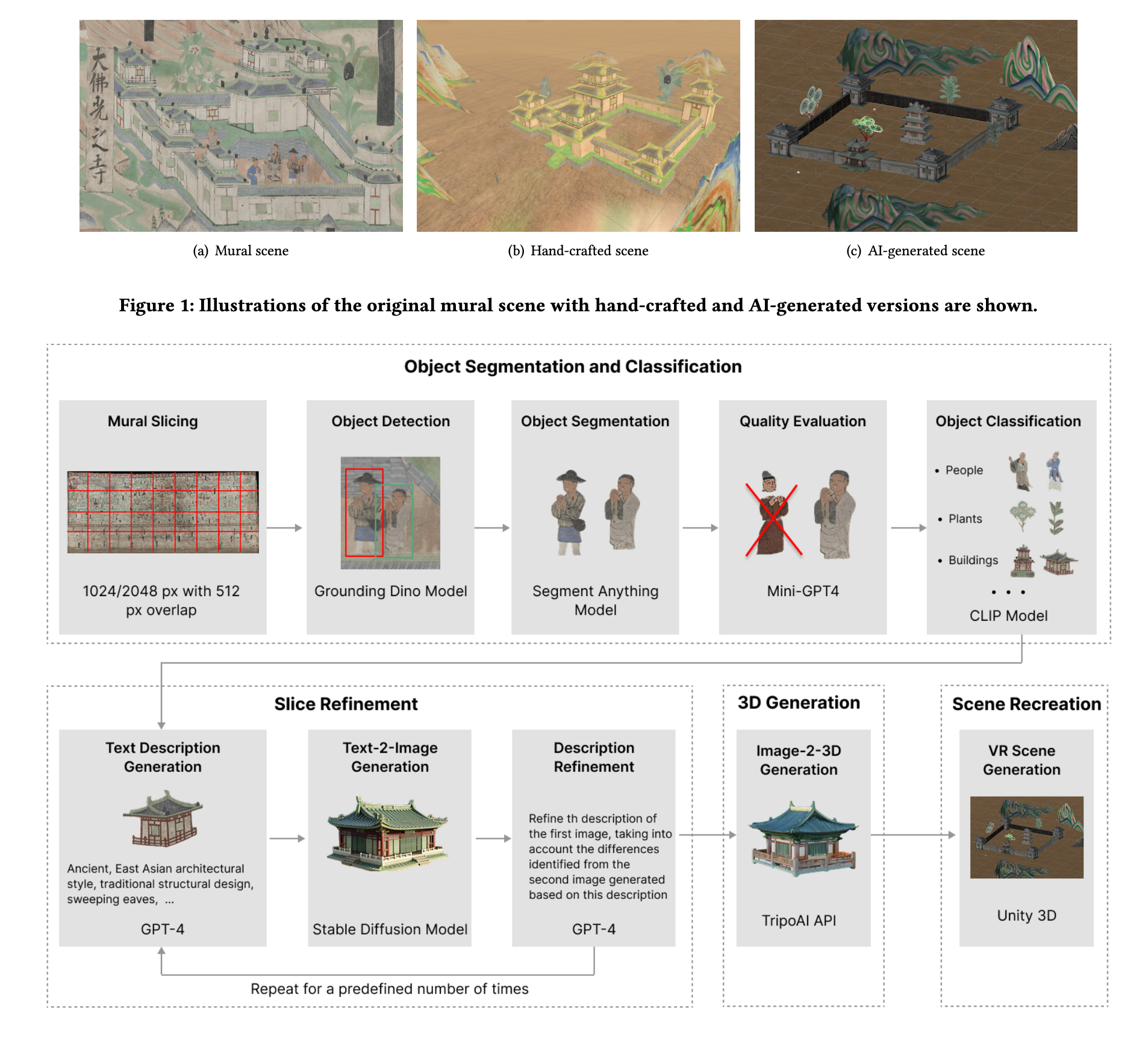
This study aims to explore the use of Generative AI (GenAI) in recreating ancient murals in Virtual Reality (VR) to overcome the labor-intensive, time-consuming process of hand-crafting such recreations. It focuses on the Foguang Temple scene from the Dunhuang Murals, a notable cultural heritage site. The research compares AI-generated murals with traditionally hand-crafted ones in VR environments.

A comprehensive pipeline was developed to automate the process of recreating murals in VR. This process involves segmentation, refinement, 3D modeling, and scene recreation using AI, with minimal human intervention. A user study was conducted with 30 non-expert participants and 5 experts. Participants interacted with both AI-generated and hand-crafted VR scenes and provided feedback on their experiences.
The study found no significant differences between the AI-generated and hand-crafted scenes in terms of user engagement, presence, authenticity, and emotional response. However, qualitative feedback highlighted areas where the AI-generated scenes excelled, such as object detail and 3D effects, but also identified issues with the consistency of the artistic style, especially in plant and architectural depictions. Experts acknowledged the strengths of the AI-generated scene’s depth and 3D effects but pointed out discrepancies in color and object material, reducing the overall authenticity.
The use of GenAI for mural recreation in VR shows promise, offering scalability and efficiency in cultural heritage preservation. However, there is room for improvement in preserving historical fidelity, achieving stylistic consistency, and integrating more contextual details to enhance the visual appeal. This study paves the way for more accessible methods in mural preservation and dissemination using VR.